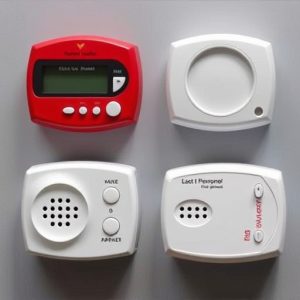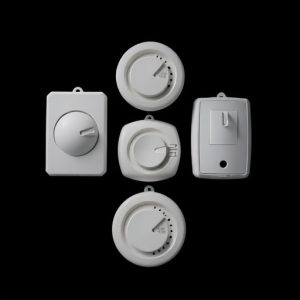Pocket-Sized Wearable Alarms: Lifesaving Panic Features for Personal Safety
Wearable security systems, combining style and advanced technology, offer modern solutions for perso…….
Wearable security systems, combining style and advanced technology, offer modern solutions for personal safety. These pocket-sized devices act as powerful alarms, featuring GPS tracking, motion sensors, fall detection, high-decibel sounds, flashing lights, and one-touch activation for discreet yet effective emergency response. By integrating these features into wearables, individuals gain a direct line to assistance, significantly reducing reaction times and offering peace of mind in today's digital age.
Wearable security systems equipped with panic features are revolutionizing personal safety. As we navigate an increasingly complex world, these innovative devices offer a modern approach to safeguarding individuals on-the-go. This article explores the evolving landscape of wearable security, focusing on pocket-sized alarm devices, their advanced design and critical features, and how panic button technology saves lives. We delve into the seamless integration of wearables with emergency services, enhancing response times for added peace of mind.
- Understanding Wearable Security Systems: A Modern Approach to Personal Safety
- Pocket-Sized Alarm Devices: Design and Features
- Panic Button Technology: Lifesaving Mechanisms
- Integrating Wearables with Emergency Services: Enhancing Response Times
Understanding Wearable Security Systems: A Modern Approach to Personal Safety
Wearable security systems represent a modern approach to personal safety, offering innovative solutions in an increasingly digital world. These compact devices, often resembling fashion accessories, pack powerful features into pocket-sized packages. At their core, they serve as advanced panic alarms designed to provide individuals with an extra layer of protection and peace of mind. With just a simple press or swipe, users can discreetly trigger an alarm that alerts nearby friends, family, or emergency services in case of danger.
Beyond the basic panic feature, these wearable systems integrate various technologies to enhance their functionality. They may include GPS tracking for location awareness, motion sensors for detecting unusual activities, and even fall detection algorithms to automatically respond to accidents. This multi-layered approach ensures that personal safety is not just about sounding an alarm but also about proactive monitoring and intelligent response mechanisms tailored to different scenarios.
Pocket-Sized Alarm Devices: Design and Features
Pocket-sized security alarm devices have revolutionized personal safety, offering a convenient and discreet way to protect oneself in various situations. These compact gadgets are designed to fit comfortably in one’s pocket, ensuring users can carry them wherever they go. The sleek and lightweight design makes them easily portable, allowing individuals to stay vigilant without sacrificing mobility.
In terms of features, these devices often include a high-decibel alarm that can deter potential attackers, along with sensitive motion sensors for early detection. Some models incorporate GPS tracking, providing users’ locations to emergency services during a panic situation. Additionally, they may have simple one-touch activation, allowing users to quickly set off the alarm in case of distress. The integration of flashing lights further enhances their effectiveness as visual deterrents.
Panic Button Technology: Lifesaving Mechanisms
Panic Button Technology represents a significant advancement in wearable security systems, offering lifesaving mechanisms that fit comfortably in users’ pockets. These innovative features allow individuals to instantly request assistance during emergencies, ensuring prompt response times. The compact design of pocket-sized security alarm devices enables easy carrying, making them accessible whenever and wherever needed.
With the push of a button, wearers can connect to emergency services or pre-designated contacts, providing their location and triggering an alert. This technology has proven invaluable for personal safety, especially in scenarios where individuals might be vulnerable or alone. By integrating panic buttons into wearable devices, users gain a sense of security, knowing they have a direct line to help should the need arise.
Integrating Wearables with Emergency Services: Enhancing Response Times
In today’s digital era, wearable technology has evolved beyond fashion accessories, integrating critical security features like pocket-sized security alarm functions. These innovative devices offer a new level of personal safety by allowing users to discreetly summon emergency services in case of distress. By seamlessly connecting wearables with emergency response networks, individuals can ensure faster reaction times, a crucial advantage during critical situations.
The integration process involves sophisticated communication protocols that enable wearables to transmit location data and alert emergency operators promptly. This direct link between the wearer and response teams significantly reduces response times, especially in remote or challenging terrains. With the tap of a button, individuals can activate panic features, providing them with peace of mind and enhancing their overall security while they’re on the move.
Wearable security systems equipped with panic features offer a revolutionary approach to personal safety, providing individuals with a sense of empowerment and peace of mind. With compact designs that incorporate advanced technology, these devices, such as pocket-sized alarm features, have transformed the way we perceive self-defense. By leveraging panic button technology, wearers can instantly connect to emergency services, ensuring swift response times and potentially saving lives. As this technology continues to evolve, its integration with emergency response systems will undoubtedly enhance overall public safety.


